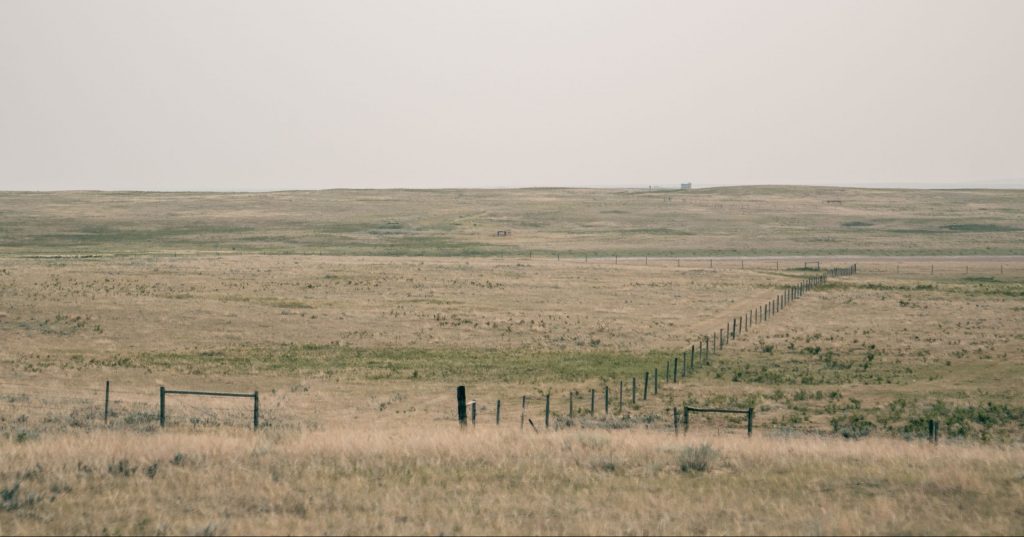AB Direct - Steers
Rail: 492.00-498.50 FOB feedlot (last week)
AB Direct - Heifers
Rail: 492.00-498.50 FOB feedlot (last week)
US Trade- Steers
Rail: 380.00 NE, IA (last week)
US Trade - Heifers
Rail: 380.00 NE, IA (last week)
Canadian Dollar
0.04

Protecting, preserving and proactive planning key to drought resilience and recovery
For generations, cattle producers have proudly advocated as stewards of the land – protecting native grasslands, watersheds and landscapes in which they reside. In fact, it is quite common for ranchers to profess that our cattle merely play a role in the true focus of our business of growing grass and turning it into a food source.
Now more than ever, in the face of severe drought, this stewardship is holding the key to both resilience and recovery.
Grass Management
Grazing studies have shown pastures in healthy condition before a drought help reduce its impact. If the grass has good litter cover and good root growth, a 25 per cent reduction in rain on a good pasture will reduce yields by about 25 per cent. If the pasture is not healthy, vigorous and is chronically overgrazed, a reduction of 25 per cent moisture will mean a yield reduction by 50 per cent. Pastures with a history of overgrazing and cattle still on the pasture will have a 75 per cent reduction in yield with a 25 per cent moisture loss.
“I know where I am going to be every day of the year before the year starts on my computer. Then, if I want to ship October 1st, and I have easily enough grazing until October 15th, I am not concerned. I have a buffer.”
Finding the balance between worrying about drought, managing grass, and having the right number of cattle to make money, is a constant juggling act for Ben Campbell, who operates Grazed Right, grass-fed beef near Black Diamond, Alberta.
For Campbell, managing grass for his 300 yearling steers begins the year before, when he decides which fields he will not graze to stockpile grass. In January, he maps out a grazing plan, months before the yearlings arrived and the grass begins to grow – or not.
“I know where I am going to be every day of the year before the year starts on my computer. Then, if I want to ship October 1st, and I have easily enough grazing until October 15th, I am not concerned. I have a buffer,” says Campbell.
If Campbell has less grass than anticipated, he can sell some cattle early, or buy some feed, but he is constantly measuring, monitoring and managing his grass and cattle inventory.

“I am making a drought plan so I will know when I have no more grass left over. I am constantly making a plan for my inventory. In fact, every week I will walk the ranch and check the pastures and see how much grazing I have left,” says Campbell.
For Campbell, managing drought means looking after the grass in his pastures and ensuring it has shade. If the grass is long enough, it will create its own shade, if not, he makes sure the soil is covered in leaf litter or old, dead grass, to not allow sunlight to hit the ground. Campbell tries to leave enough grazing on each pass to ensure the roots remain strong to allow the grass to recover when it does rain.
“If it is hot and dry and the sun is hitting the ground that is the end. Within a couple days you’re not going to have any more growth. In my experience with the grazing we have done, by leaving lots of grass behind and allowing it to rest and letting it grow before we harvest it, the grass is able to keep growing. With the drought this year we have been able to stretch our grass through that drought without drying out and burning out,” says Campbell.
Proactive Planning
According to pasture specialist Jim Gerrish, having a plan and implementing a plan is key to surviving drought.
“The best way to deal with a drought is to be proactive, planning for the drought, expecting the drought before it ever happens. If you are reduced to just reacting to what is happening in real time, that is really, really, hard to get out of that bad situation.”
“A lot of short-term droughts are of our own creation. The longer-term climactic drought – we can’t change that at ground level, but we can make our land much more drought resistant depending on how we manage surface vegetation,” said Gerrish.
Jim Gerrish shared his views on strategies with producers throughout Canada, the United States and Australia during an online webinar hosted by the Foothills Forage Association this past July.
“The best way to deal with a drought is to be proactive, planning for the drought, expecting the drought before it ever happens. If you are reduced to just reacting to what is happening in real time, that is really, really, hard to get out of that bad situation,” warns Gerrish.
“Absolutely we have to be thinking about drought every year and what is on the horizon for us.”

Gerrish says preparation is key and that includes having a spreadsheet, piece of paper or a paid-for grass-monitoring tool, to document grass and livestock inventory. For Gerrish, who lives in central Idaho where there is less than seven inches of rain each year, this has been critical to managing his operation through drought.
Similar to Campbell, every two weeks, Gerrish visits every pasture and visually estimates how much grazing is remaining in the field to know exactly how much feed is available for his cattle. Part of Gerrish’s drought plan also includes a cattle sale date if it looks like he will run out of grass or feed.
Unfortunately, having a proactive drought preparedness plan includes strategies of destocking.
“A lot of people write a drought plan that has trigger dates that they will destock x number of animal units if they have not received 70 per cent of normal rainfall by June 15. They have something like that written in the plan. June 15 rolls around, they haven’t gotten the precipitation, but they fail to pull the trigger because somebody says hold on, hoping it will rain and they get in a deeper and deeper hole.”
While Gerrish admits that it was difficult to anticipate this year’s devastating drought and heat wave, managing grass is the best way to manage through.
“When the grass does not grow, it is difficult to make the cattle herd pay for feed bought to get through a drought,” says Gerrish. He estimates it takes producers at least three profitable years to pay the feed bill from one year of drought, he warns. He cautions producers that being married to your herd can be detrimental to your longevity in the business and that difficult and strategic decisions in destocking need to be considered instead of buying feed.
Protecting Water Bodies Key During Drought
Mannville, Alberta rancher Ralph Boe said it took him and his family five years to pay off a feed bill after the 2002 drought – an experience he won’t repeat.
“It is a hard lesson to learn. You have some really good cows and some favourite cows, and, in the end, they need to eat and if you don’t have the feed they’ve got to go where there is feed.”
“It takes a long time with the amount of feed we bought that year. We brought hay up from Raymond, Alberta, and that’s quite a hay bill. It was close to $100 a tonne back then to get it delivered in the yard,” said Boe.

“It is a hard lesson to learn. You have some really good cows and some favourite cows, and, in the end, they need to eat and if you don’t have the feed they’ve got to go where there is feed,” said Boe, who has already sold cows this year when it looked like feed would be in short supply.
Instead, Boe said he tries to carry feed over from one year to the next, culling hard and letting the grass rest. This year he has also bought a remote watering system to prevent his cattle from wading into the Vermilion River to drink and protect the riverbanks.
Protecting all water bodies is also key during a drought, said Gerrish.
“Fencing out a dam or pond to control access prolongs the supply of water. If we fence them out, we can make water supplies last a lot longer and it will be a higher quality of water.”
Protecting water with a filter strip along stream channels is important. A six foot-wide buffer that includes stiff stemmed grasses, like switch grass or blue stem, is as effective as a 60 foot strip of soft grasses like orchard grass, he said.
Facing drought as a grazier is incredibly difficult. Rebounding and weathering through is possible however, with continued land stewardship, proactive planning and perseverance.
This article was first published in the September 2021 edition of ABP Magazine. Watch for more digital content from the magazine on ABP Daily.

